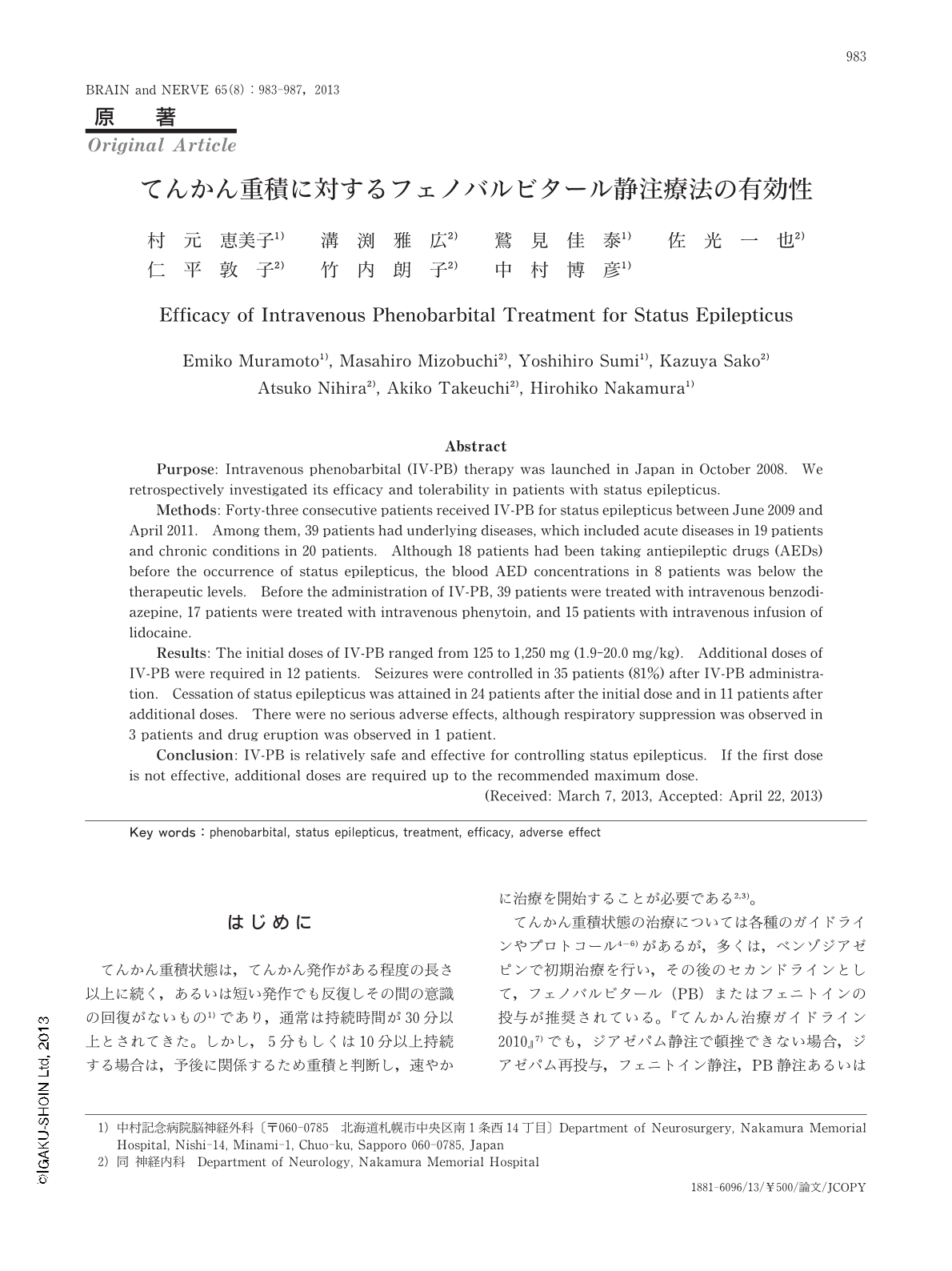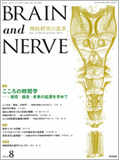Japanese
English
- 有料閲覧
- Abstract 文献概要
- 1ページ目 Look Inside
- 参考文献 Reference
はじめに
てんかん重積状態は,てんかん発作がある程度の長さ以上に続く,あるいは短い発作でも反復しその間の意識の回復がないもの1)であり,通常は持続時間が30分以上とされてきた。しかし,5分もしくは10分以上持続する場合は,予後に関係するため重積と判断し,速やかに治療を開始することが必要である2,3)。
てんかん重積状態の治療については各種のガイドラインやプロトコール4-6)があるが,多くは,ベンゾジアゼピンで初期治療を行い,その後のセカンドラインとして,フェノバルビタール(PB)またはフェニトインの投与が推奨されている。『てんかん治療ガイドライン2010』7)でも,ジアゼパム静注で頓挫できない場合,ジアゼパム再投与,フェニトイン静注,PB静注あるいはミダゾラム静注を行うことになっている。
わが国では2008年10月から静注用PB製剤が使用可能となった。静注用PBはオーファンドラッグで,国内承認に際して新生児痙攣については10例の第III相医師主導治験が行われ有効性が確認されたが,成人のてんかん重積状態の承認について国内臨床試験は行われていないため,日本人でのデータがない。
その後,主に小児のてんかん重積状態に対する有効性は報告8)されているが,成人についての多数例の報告はない。当院でてんかん重積状態に対し静注用PBを投与した患者について,後方視的にその有効性および安全性を検討したので報告する。
Abstract
Purpose: Intravenous phenobarbital (IV-PB) therapy was launched in Japan in October 2008. We retrospectively investigated its efficacy and tolerability in patients with status epilepticus. Methods: Forty-three consecutive patients received IV-PB for status epilepticus between June 2009 and April 2011. Among them, 39 patients had underlying diseases, which included acute diseases in 19 patients and chronic conditions in 20 patients. Although 18 patients had been taking antiepileptic drugs (AEDs) before the occurrence of status epilepticus, the blood AED concentrations in 8 patients was below the therapeutic levels. Before the administration of IV-PB, 39 patients were treated with intravenous benzodiazepine, 17 patients were treated with intravenous phenytoin, and 15 patients with intravenous infusion of lidocaine. Results: The initial doses of IV-PB ranged from 125 to 1,250 mg (1.9-20.0 mg/kg). Additional doses of IV-PB were required in 12 patients. Seizures were controlled in 35 patients (81%) after IV-PB administration. Cessation of status epilepticus was attained in 24 patients after the initial dose and in 11 patients after additional doses. There were no serious adverse effects, although respiratory suppression was observed in 3 patients and drug eruption was observed in 1 patient. Conclusion: IV-PB is relatively safe and effective for controlling status epilepticus. If the first dose is not effective, additional doses are required up to the recommended maximum dose. (Received: March 7, 2013, Accepted: April 22, 2013)

Copyright © 2013, Igaku-Shoin Ltd. All rights reserved.


